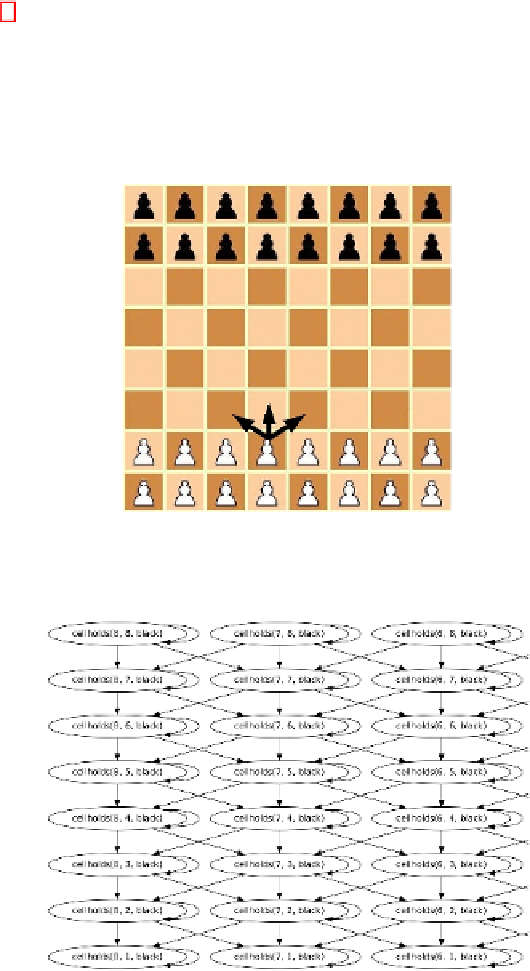Information Technology Reference
In-Depth Information
The standard evaluation function cannot distinguish any of the states in which the
goal is not reached because
true
(cellholds(X, 1, black))
is false in all of these
states for any instance of
X
.
The distance-based evaluation function is able to construct a fluent graph as depicted
in Figure 4 for distance calculation.
Therefore evaluations of atoms of the form
true
(cellholds(X, Y, black))
have now 9 possible values (for distances 0 to 7 and
) instead of 2 (true and false).
Hence, states where black pawns are nearer to one of the cells
(1,8)
,
...
,
(8,8)
are
preferred.
∞
Fig. 3.
Initial position in Breakthrough and the move options of a pawn
Fig. 4.
A partial fluent graph for Breakthrough, role black

